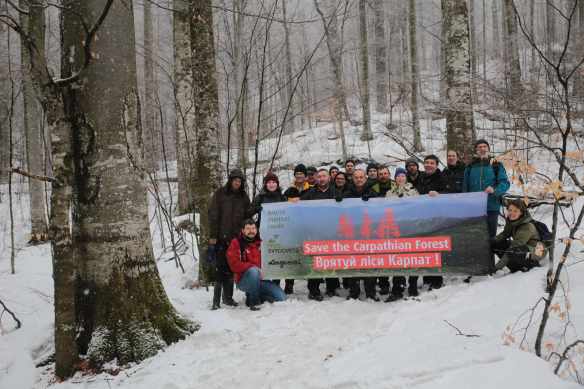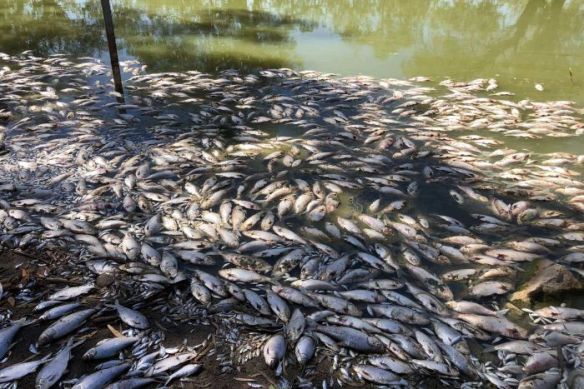
Members of the Liberal Party holding a vote for privatisation. (Photo: ABC)
Who can speak better for Australia’s commitment to a cleaner and more sustainable future than a reputable public broadcaster? It is no joke when neoliberal politicians have voted to sell it.
Australia’s ruling Liberal Party convened over the weekend and voted to sell the nation’s public broadcaster, the Australian Broadcasting Company (ABC). The ABC has been labelled as “green activist”.
The move was backed by a free-market think tank, the Institute of Public Affairs (IPA), and has suggested the sale to a media mogul, a mining magnate or simply the “people of Australia who already owns it.”
High-profile delegates who attended the national convention in Sydney included Prime Minister Malcolm Turnbull, Foreign Minister Julie Bishop, Treasurer Scott Morrison and NSW Premier Gladys Berejiklian.
The motion, supported by a majority of the 110 delegates, calls for the full privatisation of the ABC, except for services into regional areas that are not commercially viable, according to media reports.
Nothing is new. It has been a long-standing plan from the right-wing politicians to privatise ABC. It came to a head in time of the upcoming federal election set for 2019.
Back in 2014, the IPA denounced the ABC as a “green activist” and has accused the broadcaster for its “bias” in reporting on fossil fuels and renewable energy. It has commissioned iSentia to conduct media analysis of ABC’s reporting on Australia’s energy choices.
The iSentia data showed that the ABC treated the renewable energy industry highly favourable, the coal industry unfavourable, and the coal seam gas (CSG) industry highly unfavourable.
See the Green Journal AU’s earlier story here.

(Image: IPA)
Backlash
The result of the vote did not come without a backlash.
The Australian Greens said in a statement the Liberal Party Council has finally opened a can of worms exposing Malcolm Turnbull’s secret plan to sell off the ABC.
Prior to the vote, Greens media spokesperson Senator Sarah Hanson-Young said Turnbull had a secret deal with Pauline Hanson from the One Nation Party known for its intense dislike to immigrants and refugees. Hanson-Young said Turnbull talked with Hanson to ‘whack off’ money from the ABC’s budget.
The Greens called the sale of ABC electorally toxic and completely out-of-touch with the Australian people.
“If the ABC is privatised, there will be no going back. The media landscape in Australia will be worse off, and The Greens will be fighting this move with the community every step of the way between now and the next election.
The Friends of ABC is set to march in the streets nationwide to stop the impending sale while GetUp! has re-commence a campaign to thwart any privatisation plan and it is mobilising a plan to fight back.
The Friends of the ABC are holding rallies all round Australia next month to protest the continual cutting of ABC funding, the harassment of a publicly trusted institution (which is by statute politically independent) AND this latest Liberal Party move to promote the selling off of the ABC”
ABC Friends National is calling for all Liberal Party voters to reject any sell-off of the ABC as being both anti Australian and anti democratic.
“Australian Public broadcasting has an eighty-year history, and is supported by more than 80% of the community,” said ABC Friends National President, Margaret Reynolds adding, “It is not a plaything of the extremists who have dismissed public opinion in pursuit of their preoccupation with private profits.”
Playing Defensive
Following the vote, the Turnbull Government was scrambling to rule out privatisation of ABC. Some members distanced themselves from the vote, while Turnbull himself denied any plan to sell the public broadcaster.
“The ABC will always be in public hands. It will never be sold. That is my commitment. It is a public broadcaster. It always has been and it always will be,” Mr Turnbull told the media on Monday.
Government frontbencher Josh Frydenberg backed Saturday’s assurance from Treasurer Scott Morrison that the government had no plans for privatisation. Finance minister Mathias Cormann went further, saying the coalition will not be privatising the ABC
Nationals Leader and Deputy PM Michael McCormack has also distanced his party from the Liberal Party peak council, which voted to the privatisation.
“The Nationals does not, and has no intention of ever supporting the privatisation of the ABC,” Mr McCormack said in a statement.
IPA research fellow Chris Berg suggests options such as selling it to the stock market, media mogul, ABC staff or Australian taxpayers..Berg has co-authored a book with Sinclair Davidson why ABC has to be sold.
Early in May, IPA launched the book, Against Public Broadcasting, at the largest free market, pro-liberty conference in Asia Pacific.
Communication Minister Fifield, an IPA member quickly distanced himself from the book and tried to convince the public ABC would remain in public hands.
Promises Fulfilled
Back in 2014, it was a landmark victory for then Prime Minister Tony Abbott to abolish the carbon tax put in place by his predecessor, Julia Gillard, to tax polluters. It was his election promise. He was swift to fulfill his other promises — to abolish the climate change authority and disband the Clean Energy Fund.
The IPA claims itself as the world’s oldest right wing think tank representing big businesses with close links to the Business Council of Australia. It advocates free market economics, privatisation, deregulation, limited government, and a free market approach to environmental problems.
IPA is accused of being an instrument in forming the Liberal Party and is also a fund raiser for the party with major donors from the resource industry such as ExxonMobil, Telstra, WMC Resources, BHP Billiton, Phillip Morris, Murray Irrigation Ltd., Clough Engineering, Caltex, Shell, Esso, Electricity and Mining companies, and British American Tobacco among others.
See the Green Journal AU’s earlier story here.
Link to Asian Correspondent
Follow @rdelarosayoon at Twitter
























